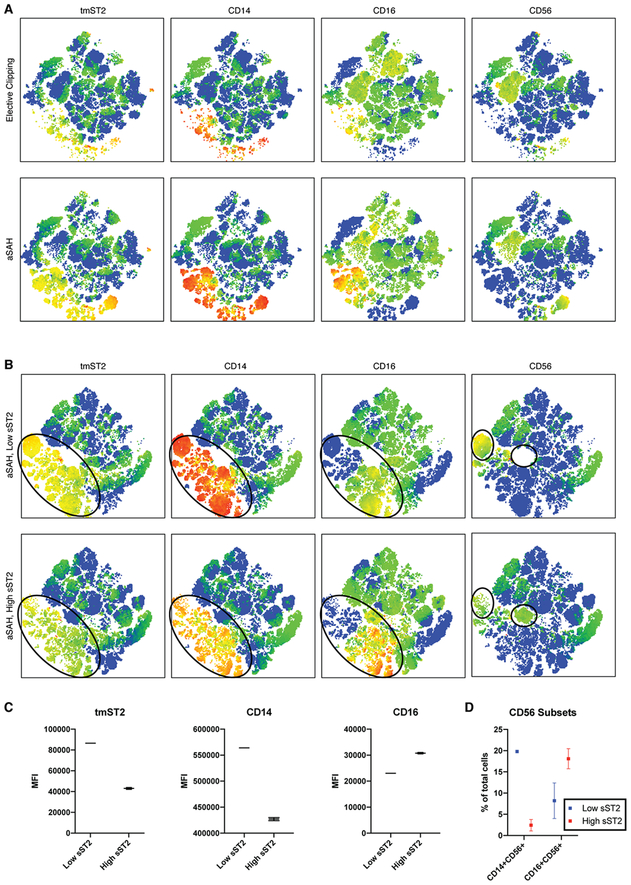Figure 5.
Flow cytometric analysis of subarachnoid hemorrhage patients. A) t-distribution Stochastic Neighbor Embedding (tSNE) analysis of subjects with aneurysmal SAH (n = 6) and control patients undergoing elective clipping (n = 6). Patients with aneurysmal rupture appear to have an increase in cells expressing transmembrane ST2 (tmST2) as well as the monocyte marker CD14, with subpopulations of CD16 and CD56 positive cells. B) tSNE analysis of aneurysmal rupture subjects with low-sST2 versus high-ST2 at the early time point (defined as below or above the median value of 75ng/mL, n = 3 in each group). There is a shift in expression of tmST2 (circled population in 3 left panels), with lesser intensity in the high ST2 group. This population also appears to have lower CD14 and variably increased CD16 expression. Unique cell clusters expressing NK cell marker CD56 were identified in low-sST2 and high-sST2 populations (circled clusters in right-most panels) variably expressing CD14 and CD16. C) Analysis of mean fluorescence intensity within the subpopulation of cells identified by tSNE analysis in the aneurysmal rupture patients finds that high-sST2 is associated with lower tmST2 (43,027 ± 860 vs. 86,500 ± 368, p < 0.001), lower CD14 (4.27×105 ± 2950 vs. 5.64×105 ± 1290, p < 0.001) and higher CD16 expression (39,960 ± 272 vs. 34,869 ± 183, p < 0.001). Markers indicate mean, error bars show standard error. D) Manual gating of CD56+ cell subpopulations in aneurysmal rupture patients finds lower percentage of CD14+CD56+ (19.8 ± 0.33% in low sST2 vs. 2.4 ± 1.3% in high ST2, p = 0.0002) and higher percentage of CD16+CD56+ cells in the high-sST2 patients (8.2 ± 4.21% vs. 18.1 ± 2.4%, p = 0.11).

